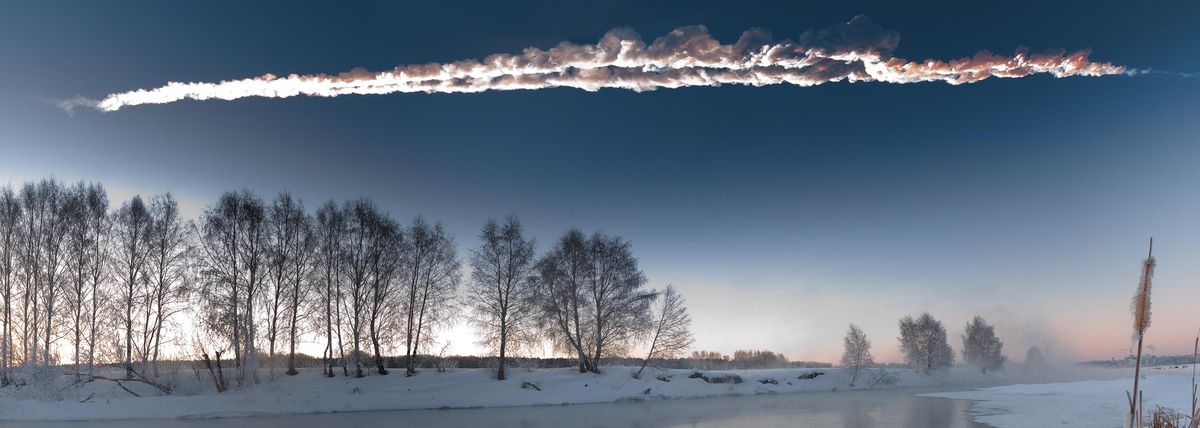Giant 'Earth Stethoscope' Spies on Planet's Wonky Behavior

The planet is crawling with tiny spies: Hidden undersea microphones, instrument-clad satellites and infrared cameras are listening, watching and smelling all the action on planet Earth, from a migrating whale to a meteor crash.
The international system, called the Comprehensive Nuclear-Test-Ban Treaty Organization (CTBTO), has been spying on Earth for the past 18 years, but researchers are still finding fresh ways to interpret its data. In fact, about 1,000 scientists plan to discuss their findings at the CTBT Science and Technology conference, to be held June 22-26 in Vienna.
Here's a look at four things the CTBTO can see, hear and sniff on planet Earth. [Earth from Above: 101 Stunning Images from Orbit]
1. Detect nuclear activity
The CTBTO began as an anti-nuclear network that would help countries monitor and ban rogue explosions in the atmosphere, underwater or underground.

The CTBTO's International Monitoring System (IMS), comprising 300 stations, has already proved its worth. On Feb. 12, 2013, its seismic monitoring stations and infrasound stations sensed that North Korea had conducted a nuclear test. The system alerted member states more than an hour before North Korea revealed its activities.
The IMS can also detect other types of radioactivity. For instance, the system has stations that can measure radioactive particles in the atmosphere, as it did during the March 2011 Fukushima Daiichi nuclear power plant disaster. The network tracked the invisible radioactive plume that leaked out after the catastrophe, and indicated that radioactivity levels outside Japan were not dangerous, researchers found.
Sign up for the Live Science daily newsletter now
Get the world’s most fascinating discoveries delivered straight to your inbox.
"It is the only global network which detects atmospheric radioactivity and sound waves which humans cannot hear," Lassina Zerbo, executive secretary of CTBTO, said in a statement. "Some compare the system to a combined giant Earth stethoscope and sniffer that looks, listens, feels and sniffs for planetary irregularities."
2. Sense earthquakes
The CTBTO's International Data Centre records more than 30,000 seismic signals every day, and typically finds about 130 seismic events, or earthquakes. (The number and type of signals from a certain place may indicate a small event or a larger one, such as an earthquake.) Because seismic and acoustic waves travel at different speeds and along different routes, various sensors can help determine the time, location and magnitude of each earthquake.
"Beyond nuclear monitoring, we need to understand all kinds of seismic events — which pays off in improving earthquake, fault and tectonic monitoring," said Randy Bell, director of the CTBTO's International Data Centre. "It also has improved our understanding of the Earth itself."
In 2006, the center pinpointed the epicenter of a 7.0-magnitude earthquake in Mozambique. "That's important information to help us understand seismic hazards and to know how best to design and build future sensitive structures, such as schools and hospitals," said Gerhard Graham, former chief operating officer of the Council for Geoscience in South Africa, and the current coordinator of the CTBTO's International Data Centre.
3. Locate meteors
The CTBTO has 48 stations that listen to infrasound — sound waves with frequencies too low to be heard by the human ear. Four more are being built, and another eight are expected soon.
On Feb. 15, 2013, 20 of CTBTO's infrasound stations detected signals from the meteor that sped across the skies of Chelyabinsk, Russia. One station in Alaska determined the meteor had circled the Earth three times. [Chernobyl to Comet Shoemaker: The 10 Greatest Explosions Ever]
In another instance, 15 stations detected the October 2009 meteor that exploded over Sulawesi, Indonesia. But measurements from the sensors show that the Chelyabinsk meteor was 10 to 50 times more energetic. These sensors are so sensitive they can track the number of meteorites burning in Earth's atmosphere, and give scientists a better idea of how many near-Earth objects affect the planet.
The sensors can track other atmospheric disturbances, including volcanic eruptions and severe storms. Nearly 20 years of accumulated data also help them understand how temperatures and currents in the atmosphere affect the weather and, ultimately, climate change.
4. Track migrating whales
The CTBTO's 11 underwater listening posts can detect breaking icebergs and the migration of whales all over the world.
"The data are a treasure trove for those studying marine mammals," said Mark Prior, a former CTBTO staff member now with the Netherlands Organization for Applied Scientific Research. "The main thing limiting use of the data is our imagination."
For instance, one research group is tracking the migration of a species of blue whale that lives in the Indian Ocean but has also been spotted off Alaska. Their work may help determine the density and size of the whale population, CTBTO researchers said. (Scientists use the frequency, duration and patterns of sounds picked up by hydrophones to identify the different whale species.)
The system may also help researchers find and locate large aircraft crashes. Experts are still combing the data to look for Malaysia Airlines flight MH370, according to a news release from CTBTO.
What's more, both hydroacoustic and seismic stations — some of which are in extremely remote locations — can track earthquakes around the Ring of Fire surrounding the Pacific Ocean, thus helping the organization issue tsunami warnings. There are 13 countries with tsunami-warning centers that receive data from about 100 CTBTO stations, researchers from the international organization said.
These systems aren't cheap. Countries across the world have invested about $1 billion in total to create and maintain this "global ear," Zerbo said.
"Every year, they continue their investment, hoping it will never have to be used for its intended purpose of detecting a violation of the Nuclear-Test-Ban Treaty," he said. "Civil and scientific spinoffs show the world immediate payback and, in turn, increase support for the treaty."
Follow Laura Geggel on Twitter @LauraGeggel. Follow Live Science @livescience, Facebook & Google+. Original article on Live Science.

Laura is the archaeology and Life's Little Mysteries editor at Live Science. She also reports on general science, including paleontology. Her work has appeared in The New York Times, Scholastic, Popular Science and Spectrum, a site on autism research. She has won multiple awards from the Society of Professional Journalists and the Washington Newspaper Publishers Association for her reporting at a weekly newspaper near Seattle. Laura holds a bachelor's degree in English literature and psychology from Washington University in St. Louis and a master's degree in science writing from NYU.









